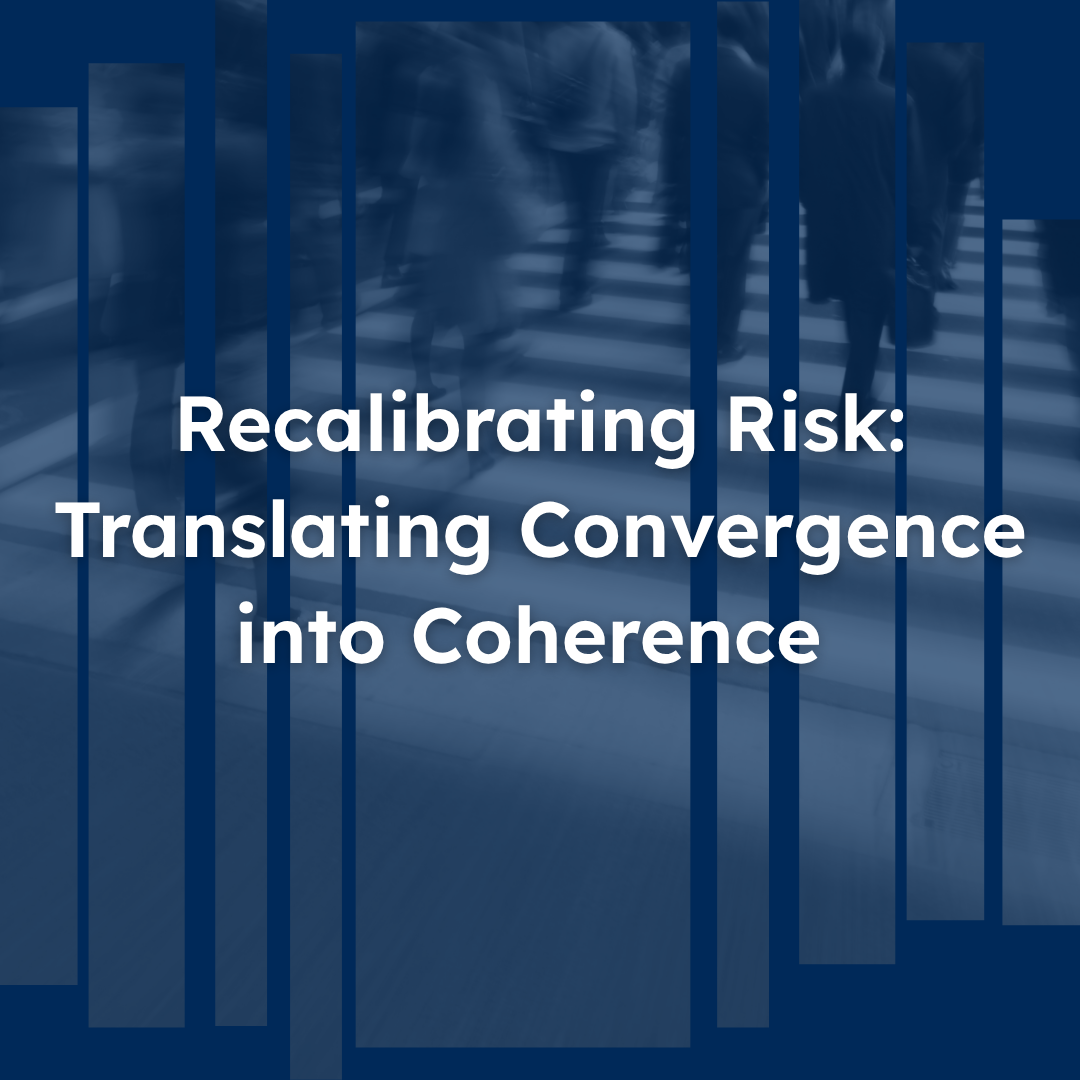This paper explores how small misalignments in language, incentives, and delivery create a ‘calibration gap’ in financial crime strategy — and why treating translation as infrastructure is essential to avoid the thousand-cut fracture.
Reality Check: Financial crime strategies often look solid in principle but fracture in practice. Not because people aren’t working hard, not because technology isn’t advanced enough, and not because regulators don’t care.
The fractures emerge in the subtle but critical drift between what is intended and what is actually delivered.
Convergence — bringing compliance, fraud, technology, operations, and commercial teams together — is essential. But convergence alone is not enough.
What determines success is translation: the active process of reconciling different interpretations of risk, priorities, and incentives so that strategy becomes coherent execution rather than fragmented action. Without it, institutions quietly build fragility rather than resilience.
The calibration gap
The gap doesn’t arise from negligence. It grows out of small but compounding differences in:
➡️Language — distinct “dialects” of risk across teams.
➡️Incentives — KPIs and success measures that quietly clash.
➡️Maturity — uneven capabilities and resources
➡️Context — frontline constraints, customer realities, regulatory pressures.
Individually, these gaps seem minor. Together, they create the thousand-cut fracture: tiny discrepancies that quietly undermine resilience and open the door to exploitation. Crucially, these fractures often remain invisible until something breaks — a missed alert, a misunderstood typology, or a regulator’s challenge.
Why translation matters
Without translation, convergence is only surface-level alignment — fragile under the realities of practical and operational pressure.
With translation, institutions create the connective tissue that ensures policies, controls, and innovations are implemented consistently, proportionately, and effectively.
Translation doesn’t dilute expertise. It makes it usable. It empowers those who operate at the seams — bridging legal, technical, operational, and commercial realities. Most importantly, it turns documentation into reflexes and strategy into repeatable practice.
Where it breaks down
➡️Inside organisations: incentives pulling in different directions; fragmented language; top-down decisions stripped of nuance.
➡️Across the ecosystem: regulators, vendors, industry bodies, and academia all practically define “risk” differently — slowing or distorting collective response.
And we’ve seen the consequences:
➡️A risk appetite change that looked fine in policy but eroded trust with long-standing customers.
➡️A vendor tool that passed procurement but left frontline staff exposed.
➡️A regulator’s guidance that splintered into six inconsistent implementations across one firm.
Conclusion
What needs to change
Translation must be treated as infrastructure, not an afterthought.
- Explicit trade-offs — surfacing and owning decisions, not letting them be absorbed invisibly.
- Translation checkpoints — mechanisms to test clarity across functions before rollout.
- Cross-functional fluency — roles and people who can speak multiple dialects.
- Constructive friction — purposeful challenge to expose drift before it becomes structural.
This isn’t about perfection. Divergence is inevitable. But recalibration is a discipline: making tensions visible and manageable, turning alignment from assumption into practice, and treating translation as an ongoing capability, not a one-off fix.
The open question
Every firm is converging.
The real test: are you translating?
Because without translation, you’re not reducing risk — you’re quietly building fragility.
Criminals don’t wait for your internal alignment meetings. They thrive in the seams you don’t even see.



 Olivia Kearney
Olivia Kearney
 Plenitude Insights
Plenitude Insights AML/CTF/CPF
AML/CTF/CPF


